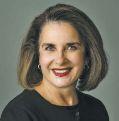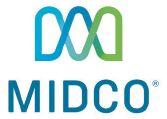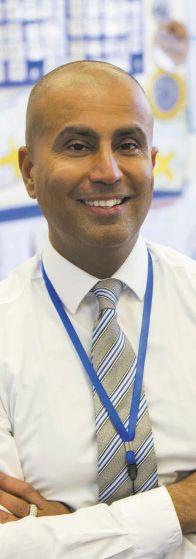PROGRESS ON HOUSING

Thief River Falls, Minn., developers build smaller, MORE AFFORDABLE HOMES















Thief River Falls, Minn., developers build smaller, MORE AFFORDABLE HOMES













Perfectly designed to thrive in its environment. Adaptable enough to evolve with the times. Building smart for a solid future. It’s second nature at KLJ.





VIRTUAL REALITY HELPS MORE AND MORE LOCAL BUSINESSES SHOWCASE THEIR WARES
THE UPPER MIDWEST’S PROBLEM-SOLVING ABILITY STANDS OUT BY TOM DENNIS
12
HOW THE REGION’S COLLEGES AND UNIVERSITIES ARE MEETING THE ENROLLMENT CHALLENGE
14
SMALL IS BEAUTIFUL, WHEN IT COMES TO HOUSING THE GROWING WORKFORCE IN THIEF RIVER FALLS, MINN.


FOR CARBON-CAPTURE TECHNOLOGY, A NEW DAY HAS DAWNED BY BRAD CRABTREE
JEFF FAGERSTROM, DIRECTOR OF THE NORTHWEST MINNESOTA HOUSING COOPERATIVE, STANDS IN FRONT OF THE COOPERATIVE’S DEVELOPMENT OF SMALLER HOMES IN THIEF RIVER FALLS, MINN.
IMAGE: NICK NELSON/FORUM NEWS SERVICE
16
TWO WORDS HELP ORGANIZATIONS DEAL WITH THE THREAT OF ACTIVE SHOOTERS: PREVENT AND PREPARE BY DON MOSEMAN
AVOIDING THESE COMMON PITFALLS CAN HELP AVOID EMPLOYEE LAWSUITS BY SETH THOMPSON AND KRISANN NORBY-JAHNER 20

WINDOWS OF OPPORTUNITY A Q&A WITH PAUL MARVIN, THE FOURTH-GENERATION MARVIN TO LEAD MINNESOTA’S ICONIC MARVIN FAMILY OF BRANDS

Our Senior Water Resource Engineer, Tom, loves a challenge. That’s why when designing a solution for stormwater retention/detention, Tom got creative. By creating an eco-friendly solution over a traditional pump station, this portion of flood control provided an innovative approach and saved the Souris River Joint Board millions of dollars in the process.

Turning his passion into progress, that’s what Tom is most proud of. And we are, too.


To learn more about the Centennial Pond/Perkett Ditch project, visit our website at www.ackerman-estvold.com/projects

There’s a lot to like about life in the Prairie Business region of the upper Midwest. My favorite qualities include the region’s good schools, low crime rate and spirit of Minnesota and North and South Dakota Nice.
But the longer I live in the region, the more I appreciate this characteristic, too: Problems have solutions here.
Time and again, I’ve watched local lawmakers talk about a problem and vote on a solution; and then I’ve noticed that the policy seems to work. It solves the problem, or at least makes the situation better.
This method of governance has served America well for 231 years. And what a delight it is to see civic leaders in our region continuing to put it to good use.
Now, here’s another upbeat point: Very often, the solutions are informed by the actions of citizens – local residents who’ve tried and succeeded on their own.
Such is the case with the subject of this month’s cover Q&A: the Greenwood Avenue project that’s building smaller, less expensive single-family homes in Thief River Falls.
The project is modest at this point, involving only a block or two of homes. But here’s a prediction: Other communities will give it a try.
Because throughout the Red River Valley and beyond, civic leaders are fretting about their communities’ seeming inability to build starter homes. The Thief River Falls project is cracking that code, and it’s doing so while being powered by profit, not just charity.
That’s an energy source other communities will want to harness, too. We’re pleased to bring it to your attention in this month’s Prairie Business.
PUBLISHER KORRIE WENZEL

AD DIRECTOR
STACI LORD EDITOR
TOM DENNIS
CIRCULATION MANAGER BETH BOHLMAN
LAYOUT DESIGN ANNA HINSVERK
ACCOUNT MANAGERS
NICHOLE ERTMAN 800.477.6572 ext. 1162 nertman@prairiebusinessmagazine.com
JENNIFER LEROUX OLSZEWSKI
800.477.6572 ext. 1167 jlolszewski@prairiebusinessmagazine.com
Prairie Business magazine is published monthly by the Grand Forks Herald and Forum Communications Company with offices at 375 2nd Avenue North, Grand Forks, ND 58203. Subscriptions are available free of charge. Back issue quantities are limited and subject to availability ($2/copy prepaid). The opinions of writers featured in Prairie Business are their own.
Unsolicited manuscripts, photographs, artwork are encouraged but will not be returned without a self-addressed, stamped envelope.
SUBSCRIPTIONS
Subscriptions are free www.prairiebusinessmagazine.com
ADDRESS CORRECTIONS
Prairie Business magazine Box 6008 Grand Forks, ND 58206-6008
Beth Bohlman: bbohlman@prairiebusinessmagazine.com
ONLINE www.prairiebusinessmagazine.com









MINNEAPOLIS – Something extraordinary happened in Washington in February. Republicans and Democrats — from the most conservative to most liberal members of Congress from across the country — came together to support landmark energy and environmental legislation.
The budget bill passed by Congress includes the FUTURE Act to extend and reform the federal Section 45Q tax credit for capturing and storing carbon dioxide from power plants and industrial facilities.
The act is of vital importance to the future of the Northern Plains’ energy economy and the industries, companies, workers and communities that depend on it.
The FUTURE Act represents one of the most significant energy and environmental accomplishments by Congress in recent memory. Its passage highlights the potential for carbon capture to marshal support across the political spectrum for a policy that supports American energy production, reduces carbon emissions and protects and creates highpaying jobs.
The bill’s key sponsors are to be commended for their bipartisan leadership. Sen. Heidi Heitkamp, D-N.D., was joined by fellow Sens. Shelley Moore Capito, R-W.Va., Sheldon Whitehouse, D-R.I., and John Barrasso, R-Wyo., as well as by Rep. Mike Conaway, R-Texas, who led the effort in the House.
The Carbon Capture Coalition, an
unprecedented partnership of our nation’s largest coal, oil, electric power, ethanol, industrial and technology companies, key industrial labor unions and national environmental, energy and agricultural organizations — interests often on opposing sides of energy policy — jointly supported this legislation because of its many benefits.
performance-based. Only projects that successfully capture and safely and permanently store CO2 can claim the credit. No taxpayer dollars will flow to projects that fail to do so.
The FUTURE Act marks the culmination of more than six years’ work by the Carbon Capture Coalition and its partners to build support for the 45Q tax credit. Their effort helped garner bipartisan backing from North Dakota Gov. Doug Burgum and governors of Kansas, Montana, Oklahoma, Pennsylvania and Wyoming, all of whom signed a letter urging congressional action.
Importantly, the legislation extends and increases the tax incentive, providing the financial certainty and greater value needed to drive private investment in carbon capture projects.
It expands eligibility to smaller-scale industrial facilities such as ethanol and fertilizer plants, and increases flexibility for tax-exempt electric cooperatives and other entities to use the tax credit more effectively.
The legislation also is fiscally and environmentally responsible. The CO2 that’s captured and stored through enhanced oil recovery will extend domestic production from existing oil fields, displace more carbonintensive foreign crude and generate new federal revenue, all while significantly reducing carbon emissions.
Last but not least, the incentive is
Organizations of state officials issued resolutions calling on Congress to enact 45Q legislation based on recommendations developed by the coalition and its partners. Legislators in several states, including North Dakota, also passed resolutions of support.
North Dakota and the region helped pioneer a global model for carbon capture when Dakota Gasification began capturing CO2 from lignite in 2000, transporting it by pipeline to Saskatchewan, using it for enhanced oil recovery to recover additional oil and permanently storing the CO2.
Now, our region’s companies and entrepreneurs have a powerful financial tool to continue to innovate and invest.
The revamped 45Q incentive is essential to efforts by the lignite industry, power companies and state policymakers to retrofit an existing coal-fired power plant to capture its emissions,
“ The act is of vital importance to the future of the Northern Plains’ energy economy and the industries, companies, workers and communities that depend on it. ”
as well as to demonstrate next-generation Allam Cycle carbon capture technology on lignite coal.
It also boosts plans by Red Trail Energy and other ethanol producers to collect and store CO2 from fermentation, further reducing the carbon footprint of their renewable fuel.
Consumers and businesses increasingly demand lower-emission technologies, processes and products. Just as federal and state incentives have reduced the cost and risk of deploying wind and solar technologies, the revamped 45Q tax credit will unleash private investment in carbon capture technology across sectors critical to the Northern Plains region, helping position our industries, companies and communities for success in a lowcarbon economy.
Vice president for fossil energy, Great Plains Institute


bcrabtree@gpisd.net

701-647-2041
www.carboncapturecoalition.org
BISMARCK, N.D. – Lawsuits are often harder to defend against than they are to prevent. Avoiding the following three missteps will save employers money — and headaches.

MISSTEP 1: FAILING TO HAVE CLEAR, WRITTEN POLICIES THAT ARE BOTH COMMUNICATED AND FOLLOWED
Having clear, well-drafted policies is critical, but the work doesn’t end there. All policies should be effectively communicated to employees and consistently followed, as underscored by the recent wave of sexual harassment lawsuits.
Unlawful sexual harassment and other forms of discrimination are not new concepts, but the #MeToo movement provides a cautionary tale of what happens when employers fail to craft and follow through with clear policies and procedures.
An employer is liable for a supervisor’s workplace harassment that causes a significant change in employment status, such as firing, failing to promote, demotion and so on. If the supervisor’s harassment does not significantly change the victim’s employment status, but rather creates a hostile work environment, the employer is liable unless it can prove: (1) the employer exercised reasonable care to prevent and promptly correct unlawful behavior; and (2) the victim unreasonably failed to take advantage of preventive or corrective avenues provided by the employer.
When the harasser is a co-worker, an employer is liable only if it knew or should have known about the harassment and did not act.
Having a clear anti-harassment policy represents an employer’s attempt to prevent and promptly address unlawful behavior. An effective policy requires identification
of prohibited behaviors, a clear complaint procedure, prompt investigation procedures, anti-retaliation assurance, remedial-action assurance and ongoing workplace training.
Front-line supervisors or managers are the
eyes and ears of a company. When employees request reasonable disability accommodations, report harassing behavior, request time off, have policy questions and so on, they usually speak with a direct supervisor.
Supervisors need training on company policies and red flag issues that must be brought to human resources and/or management for consistent and proper administration.
• Attendance
• Discrimination/harassment/retaliation
• Electronic communications
• Medical leave
• Military service leave
• Paid/unpaid time off
• Substance abuse
• Workplace violence and safety
• Wage and hour compliance
Proper supervisor training is critical because many are promoted directly from the workforce without outside training. Supervisors are a key conduit for information between the employees and human resources and upper management. If the front-line supervisor knows about something, in a lawsuit the company is likely deemed to have known it, too.
Exempt employees are not entitled to overtime pay, but non-exempt employees are. So, if an employer pays an employee a salary, that employee is an exempt employee, right? Maybe. An exempt employee must be paid: (1) a
predetermined and fixed salary not subject to reduction because of variations in quality or quantity of work performed; (2) the salary must be at least $23,660 annually or $455 per week (stay tuned for changes to this threshold in 2018!); and (3) the job duties must primarily involve executive, administrative or other professional duties, or other exempt classes as defined by federal regulations.
An employee can be properly categorized as exempt only if all three tests are satisfied.
Independent contractors pose another frequent misclassification. Employees are paid wages, subject to tax withholdings, provided workers’ compensation benefits and so on. Independent contractors, conversely, are simply paid to perform a job.
Calling an employee an independent contractor does not make the employee an independent contractor. Rather, there are lengthy, multi-part tests primarily focused on whether the employer has “control” over the worker.
The more control an employer has, the more likely the worker is actually an employee.
Misclassification often results in significant fines, penalties, back pay and attorneys’ fees. Thus, employers should proactively ensure they
have accurate, up-to-date job descriptions for all employees.

In addition, employers must scrutinize whether independent contractors are actually employees, but simply called independent contractors.
Ensuring legal compliance in the workplace is akin to preventive car maintenance. Take the time now to make sure policies are clear, wellwritten, communicated and followed. Ensure proper supervisor training and communication. And verify that employees and independent contractors are properly classified. Investing the time to follow these measures now will be time well spent in the long run.
KrisAnn Norby-Jahner,
Vogel Law Firm
Fargo, Bismarck and Grand Forks, N.D. Minneapolis and Moorhead, Minn. 701-237-6983

BISMARCK, N.D. – The world in which we live has changed. People experience family pressures, financial crises and other emotional setbacks regularly. But the number of people whose stress is translating into violent acts taking place in our schools, workplaces and houses of worship is increasing, resulting in an alarming number of injuries and deaths.

The statistics are staggering, and all of us need to be prepared. As a society, we can surely debate how we arrived at this moment and how we can improve. But the focus for schools and businesses should be what steps need to be taken to mitigate the possibility of an active shooter event and how to prepare staff, students and employees to properly react.
A good place to start is mitigation principles. For schools, this comes down to three basic layers of protection.
• The first is physical security. Schools should have professional safety assessments performed to identify all potential hazards. In general, schools should have one controlled entrance, security cameras to monitor key assembly areas and identified safe rooms for students and staff to shelter-in-place.
• The second layer is one of behavior analysis. The FBI, U.S. Department of Homeland Security and other agencies have published a wealth of information on what is known about active shooters.
There are certain behaviors staff can be trained to identify so early intervention can take place.
• The final layer involves the students themselves. Schools should build programs to encourage students to be concerned about each other. Students also need to feel they have a means to notify staff of potential problems they observe among their peers. Active monitoring of social media is another key element of this layer.
One fundamental change we all need to embrace is that each threat received by police or staff should be treated as credible until it can be proven otherwise, instead of assuming it’s not credible until we can prove it is.
The next consideration should be emergency preparedness. A comprehensive Emergency Action Plan or EAP should include, at a minimum, procedures for fire evacuation, severe weather, bomb threats, suspicious packages, shelter-in-place, lockdown and active shooter. All school plans should follow the suggested protocols of the Department of Homeland Security.
Once the plan is developed, it should be practiced and drills scheduled to test employee knowledge and procedures. Employees should know exactly what their roles are in an emergency.
Employees should have professional training on their EAP and the Department of Homeland Security’s protocol for active shooter response. The department’s Run, Hide, Fight procedure should be used and understood by all employees and staff members.
We also need to acknowledge that active shooter events could happen in public spaces such as malls, stores and theaters. Each time you enter a public venue, make note of where your exits are, visualize your movements ahead of time and be prepared.
Remember, get out by any means necessary. If you cannot exit, shelter-
in-place in a location where you are protected. If the shooter enters your space, look for any means of defense. This is the essence of Homeland Security’s Run, Hide, Fight protocol.
The evidence is clear: our schools are especially vulnerable to active shooter events. Since 1980, not a single fatality has occurred in a U.S. school as a result of a fire. In that same timeframe, hundreds of students and staff members have been killed in school shootings.
We’ve had our share of fires, but the schools had a plan, they practiced it, and staff knew exactly what to do. We need to apply the same training and resources to be prepared for active shooter events.
Making this paradigm shift is critical to saving lives.
Training
directorNorth Dakota Safety Council


Bismarck, N.D.
donm@ndsc.org
Moseman, a former state trooper, was recognized as the 2003 Law Enforcement Education Officer of the Year by the Bureau of Alcohol, Tobacco, Firearms and Explosives for his work in combating school violence.
He has taught nearly 200 Active Shooter and Violence Prevention courses in 17 states, and is a U.S. Department of Homeland Security-approved workplace and house-of-worship instructor.

FARGO, N.D. – Paul Lucy has been appointed interim president of the Greater Fargo Moorhead Economic Development Corp.



Lucy has 29 years of experience in economic development. He served as the director of the Economic Development & Finance Division of the North Dakota Department of Commerce from October 2006 to January 2017. Before his Department of Commerce work, Lucy had served as senior vice president of the EDC and as president of the Minot Area Development Corp.
Since April 2017, Lucy has been providing contract services to organizations seeking economic development expertise.
EDC President Jim Gartin retired effective March 15.
The EDC executive committee launched a search for a new president in January and hopes to have new leadership on board as quickly as feasible.
GRAND FORKS, N.D. – Brad Wehe, Altru Health System chief operating officer, has been chosen by the Altru board as the health system’s new chief executive officer, effective Jan. 1, 2019.
Wehe will succeed Dave Molmen, Altru’s current CEO, who has announced his retirement. Molmen will continue in his role until the end of this year.
The leadership succession plan has been in development for the past two years through the work of Molmen, Altru President Dr. Eric Lunn, the health system’s executive team and Altru’s board, Altru announced. Wehe began with Altru Health System in 1989 and has served in leadership positions since 1991, first as manager of outreach therapy services and occupational medicine and then administrative director of regional operations. In 2011, he became Altru’s chief operating officer.
FARGO, N.D. – David Bertolini has been named dean of the College of Arts, Humanities and Social Sciences at North Dakota State University. He has served as interim dean since July 2017 and was selected following a national search.
Bertolini joined NDSU in 2013 as professor and chair of the architecture and landscape architecture department. He worked with the department’s advisory board and faculty to develop a comprehensive fundraising campaign, bringing in $678,000 for scholarships and an endowed chair fund. He also developed a student recruitment and retention strategy to reverse the trend of declining enrollment in the field and to improve student retention. The plan has improved student retention and increased enrollment by 29 percent.
Bertolini came to NDSU from Louisiana State University, Baton Rouge, where he served as graduate coordinator and associate professor. Before that, he was a lecturer at Villanova University in Philadelphia. He also has worked as an architect for firms in Pennsylvania, New York and France.
Bertolini earned his bachelor’s degree at the University of Florida, master of architecture at Virginia Polytechnic Institute and doctorate in English from Temple University.
BISMARCK, N.D. – Arik Spencer has been selected as the new president and CEO of the Greater North Dakota Chamber. Spencer had been serving as executive vice president of the North Dakota Motor Carriers Association, which represents North Dakota’s trucking industry. Before joining the NDMCA in 2013, Spencer spent seven years with the North Dakota Parks and Recreation Department, where he worked on public policy issues.
Spencer received his bachelor’s degree in business management from the University of Mary in Bismarck. He is a member of the Trucking Associations Executive Council, the Western Trucking Association Executives Council, the Upper Great Plains Transportation Institute Advisory Board and the North Dakota Workforce Safety and Insurance Coordinating Council.

WATFORD CITY, N.D. – Vicki Monsen is the new Watford City market president for Cornerstone Bank. Originally from Watford City, Monsen joined the bank while still in high school through a vocational program with the Watford City High School. She returned to the bank as a full-time employee in January 1989. She has worked as a customer service representative, a

real estate loan officer and most recently in the Finance Department as the controller.
Monsen holds an associate degree from Interstate Business College and is a graduate of the Graduate School of Banking in Boulder, Colorado. She is also a graduate of Rural Leadership North Dakota and has served on the Rural Leadership North Dakota Council.







With more than 5,000 employees in 12 factories across the United States – about 2,100 of whom are located in Minnesota – the Marvin Companies are one of the largest made-to-order window and door manufacturers in the world.
In October, the family-owned firm named Paul Marvin as president and CEO. He is a member of the fourth generation of the Marvin family to work in the business; and in this Q&A, he answers questions about his background, his family’s legacy and the Marvin Companies’ century-long history in its headquarters town of Warroad, Minn.

Like my fellow fourth-generation family members working at the Marvin Companies, an early formative moment was beginning to work at the company from a young age. Many of us worked throughout Marvin in our teens and through college.
My first job was working in the casement window department on the swing shift; this experience was critical to my understanding of the business.
Another highlight was watching the second and third generations of family leaders build and guide the companies. I had the honor of seeing my grandfather run the business when I was a child, and to see him –and later my father, aunt, and uncles – deliver a speech at the company’s annual meeting was an iconic moment for me.
These meetings are also where we unveil the year’s profit sharing totals, and it taught me the value of sharing the fruits of your labor with those who make it happen.
Finally, the entire fourth generation of the Marvin family grew up in Warroad, Minn. Living in a small town was also incredibly formative and helped to prepare all of us for our careers at Marvin.
Because we were down the road from the company’s headquarters, the company values were infused in us all from a young age.
Paul Marvin, the Marvin Companies’ president and CEO, opens a window on his thoughts about leading his family’s venerable Minnesota firm
Q.
YOU HAVE SOME TERRIFIC ROLE MODELS TO LOOK UP TO FROM THE FIRST THREE GENERATIONS OF MARVIN LEADERS. HOW ABOUT FROM OUTSIDE OF THE FAMILY: WHO ARE SOME OF YOUR OTHER BUSINESS HEROES, AND WHAT DO YOU ADMIRE ABOUT THEM?
Our family has always admired other family businesses. We enjoy watching, meeting with and learning from others who are also continuing a family legacy.
For me, I found John Mackey’s book, Conscious Capitalism, to be transformational. Mackey details his personal epiphany that business can exist for good – and exist for things beyond a profit.
The Marvin Companies has always operated this way. Our purpose to enrich the spaces and places where we live and work includes serving the communities in which we do business. Mackey’s writing provides unique insight on the opportunity every business has to serve.
Q.
IN 2016, YOUR AUNT SUSAN (SUSAN MARVIN, FORMER MARVIN COMPANIES PRESIDENT AND NOW BOARD CHAIR) SAID THIS ABOUT THE COMPANY’S LONGSTANDING DECISION TO STAY IN WARROAD, MINN.: “THE LOCATION FORCED US TO BE INNOVATIVE, AND SOME OF THESE INNOVATIONS BECAME COMPETITIVE STRENGTHS.” TELL US ABOUT THAT AND ABOUT THE OTHER REASONS FOR THE COMPANY’S COMMITMENT.

Our headquarters in Warroad are remote. And as such, we don’t have some of the luxuries that larger metropolitan areas might have. So, that has forced us to have a “can do” attitude and a creative, entrepreneurial spirit.
Consequently, we are independent and self-sustaining.
While our location has provided competitive strengths, maintaining our headquarters in Warroad is also a core part of our company’s purpose. That’s providing good quality jobs with outstanding benefits, but it’s also contributing to the vitality of the community in a purposeful and meaningful way.
Quite simply, it goes to why we exist – our commitment to our purpose.
Q.
A. A. A.

HERE’S AN INTERESTING ITEM FROM A STAR TRIBUNE STORY ABOUT YOU: “AFTER COLLEGE, AT AGE 23, HE FOUNDED A SCHOOL BUS COMPANY IN MINNEAPOLIS THAT STARTED WITH ONE BUS AND ENDED WITH 20 BUSES AND 20 EMPLOYEES. HE SOLD THE BUS BUSINESS IN 2006 AND RETURNED TO MARVIN WINDOWS.” WHAT WAS THAT EXPERIENCE LIKE, AND WHAT DID YOU LEARN?
I learned many lessons from this experience, but the most significant takeaway was entrepreneurialism – that small start-up was entrepreneurialism defined. That spirit translates clearly to my role as president and CEO now, as well as with the entire Marvin family working in the business today.
We are focused on staying creative, staying current and also recognizing the need to be really agile and flexible.
Owning a business also taught me about making mistakes and how to recover from them, which has proven to be critical knowledge throughout my career.
Our customers are probably feeling the effects of the tight labor market more than we are at the manufacturing level. The builders, installers and contractors whom we partner with continue to share these concerns with us. In turn, we are focused on providing high-quality, value-added solutions to help ease that burden.
For example, we’ve greatly expanded our interior finish options with factoryapplied interior paints, stains and finishes. We’re also providing more factory mulling solutions than ever, as well as things like beautiful and thoughtfully integrated window shades. (Editor’s note: Mulling is the act of attaching two or more window units together.)
These are all examples of things that we can do in our factories that our contractors and installers – and ultimately, homeowners – won’t need to worry about.
With a look to the long-term, we’re also actively involved in partnerships with both community educators and industry leaders such as the GenerationNext program by “This Old House” to support education and resources for the next generation of workers.
We believe that exposing students to opportunities in the construction trades today will bolster the industry’s future employees.
I also learned what it means to be an employer. Up to that point, that idea was merely theoretical in my college coursework. I quickly learned that life is more complex than the classroom, and that people are depending on their employer for their livelihood.
It is a tremendous honor, privilege and responsibility. It helped me learn how to treat people, which translates back to the Marvin Companies and our family – how we treat people and manage our business.
Quite simply, it goes to why we exist – our commitment to our purpose.
Q.ARE YOU STILL HOLDING TO THE GOAL OF 10 PERCENT ANNUAL GROWTH THAT YOU MENTIONED WHEN YOU TOOK OVER AS CEO? IF SO, TELL US ABOUT SOME OF THE METHODS BY WHICH YOU HOPE TO ACHIEVE THAT GOAL.
A.Yes, absolutely. First, our core businesses need to continue to grow. We will continue to provide the marketplace with new innovative products, services and solutions.
In addition, we also have to grow in new ways. That might include starting new businesses from scratch. It might also mean acquiring new businesses. Our growth goal requires a new approach to how we innovate, and we are actively investing in that.
With this combination of efforts, we are on a growth trajectory – and consequently it’s a very exciting time at the Marvin Companies.
Q.THE MARVIN COMPANIES NOW HAS JOINED THE 3 PERCENT OF U.S. COMPANIES THAT SURVIVE TO SEE A FOURTH GENERATION OF FAMILY MEMBERS ASSUME A LEADERSHIP ROLE. WHAT IS IT ABOUT THE MARVIN FAMILY AND ITS DYNAMICS THAT HELPED THAT HAPPEN?


A.Any family business that survives to the fourth generation of family leadership knows it doesn’t happen by accident. It requires commitment; it’s purposeful.
Our family has always believed our business needs both ownership succession and leadership succession. You have to prepare both, and you can never start too early. That’s what we do; and we carve out dedicated time to accomplish those tasks, because it can be easy to lose sight of succession planning in the midst of running the business every day.
Succession planning and leadership planning have been absolutely essential to our business.










With its sloping, windowless walls, reinforced concrete construction and 79-foot height, the Missile Site Control Building at the Stanley R. Mickelsen Safeguard Complex looms over the landscape like a 4,000-yearold Egyptian pyramid.
So it’s ironic that the structure near Nekoma, N.D., is now being marketed using the most modern of tools: virtual reality.
Ironic – and effective. “The population of Nekoma is 49, and since the virtual tour of the Mickelsen complex went live in the fall, we’ve had 108,000 hits,” said Shannon Duerr, executive director of the Cavalier County (N.D.) Job Development Authority.
The authority acquired the former antiballistic missile site in October, and now is trying to attract government agencies, data centers and anyone else who could put the highly secure facility to good use.
The virtual-and-VR tour at the authority’s website, ccjda.org, is the result.
“The hits have come from all 50 states and 95 different countries,” Duerr said.
“It’s such an immersive experience compared to just looking at pictures. I don’t know what else we could have done that would have gotten 108,000 sets of eyes on our site.”
The marketing of the Mickelsen complex is a regional sign of a global phenomenon: the growing use of virtual reality for commercial, nonprofit and educational purposes.
That growth promises to be explosive. “The global virtual reality market was valued at approximately $2.02 billion in 2016 and is expected to reach approximately $26.89 billion by 2022,” Zion Market Research of New York reported in February.
Not only are the costs of Oculus Rift and other headsets with their own screens coming down, but also, Google Cardboard and similar viewers can turn smartphones into VR devices for about $7.

The latter is what puts the VR element in the Mickelsen complex tour.
“There are two ways you can visit the facility on our website,” Duerr said.
The first is to just click on the link. That
takes visitors to a two-dimensional but 360-degree virtual tour, similar to the ones colleges now offer to prospective students.
The second is to use VR glasses or a headset that you can attach to your phone.
“You click on the screen to switch to VR, the display gets split into two, and you’re there,” Duerr said.
“We keep a couple of headsets in the office so that when people visit, they can try it. They reach their hands out when they have the headset on, they try to walk around. It’s fun to watch.”
The authority developed the tour with the help of Be More Colorful, a Fargo company that specializes in creating such experiences.
“We are an interactive media agency,” said Matthew Chaussee, CEO.
“That means we create 360-degree imagery and virtual-reality content to help businesses promote their physical spaces.”
The work is exciting because it’s so clearly the wave of the future, Chaussee said.
“We’ve done event venues, dental offices, a pumpkin patch, the Medora Musical and Pitchfork Steak Fondue,” he said.
Basically, any group that wants people to visit a place can use VR to offer a 3D online tour.
Plus, the VR user not only is “in” the space, but also can interact with it. “This is a choose-your-own-adventure type of thing,” Chaussee said.
“And every time you come back to it, you experience it a little
differently. So it really engages the viewer in a way that traditional photos and video do not.”
Rustic Oaks, a wedding and special-event venue on a farmstead outside of Moorhead, Minn., is another Be More Colorful customer.

“A huge majority of our weddings happen from May through October,” said Emily Finley, sales director.

“But a lot of engagements seem to happen from Thanksgiving to Valentine’s Day – the wintry months. So, we wanted a way to let potential customers tour the venue without having to drive out here, as well as to show them what it looks like like during the summertime.”
The venue’s website – RusticOaks.net – now features a virtual tour that can, with a click, turn into a virtual-reality tour.
“This way, people can visit from a coffee shop or work, plus they can step into our spaces and walk through our inns and barn,” Finley said.
“It’s a great tool that I’m sure more and more venues will get into.”
One distinction that’s worth noting is between virtual reality – which puts you in a different “place” than you are in your physical reality –and augmented reality, which takes something real and adds digital elements to it.
Think fighter pilots using a “heads up” display: that’s augmented reality, said Ben Bernard, computer service specialist in the architecture and landscape architecture department at North Dakota State University.
So is the augmented reality sandbox, a unique tool used at NDSU, the University of North Dakota and elsewhere.


The sandbox is just that: a sandbox, but with an augmented-reality projector installed overhead. The machine projects topographic lines, digital rivers and lakes, map colors and other features onto the sandscape, then adjusts instantly as students scoop and pile sand.
“We can even replace the water with lava if we want to,” Bernard said.
“This is just really fun technology. And when students reach in and start sculpting, they get a much better idea of how things like landscaping, topographic lines and water flow work.”
Architects such as those trained at NDSU were among virtual reality’s first adopters, as Eric Johnson, director of visualization at JLG Architects in Grand Forks, can attest.
“Truly, VR is changing the way architects design buildings right now,” Johnson said.
“And it will do so even more in the future.”
These days, architects routinely work in 3D on a project from start
to finish. “And that’s both internally and externally, when we show clients design options and explore spatial relationships,” he said.
Clients often will put on an Oculus Rift or other PC-connected headset to step inside the design.
“The sensation of actually being in the space – I think that’s the biggest thing,” Johnson said.
“It gives you that immersive feeling, and that special relationship is very hard to match with 2D plans, including renderings and animations.”
Next up: Untethered VR, with a PCequipped headset that won’t have to be connected to a computer; and room-scale VR, where headset wearers will move physically – not just virtually – through space.
“The whole field of architecture is changing faster than I’ve ever seen it,” Johnson said.
“And this is just the tip of the iceberg now.”
Tom Dennis Editor, Prairie Business701-780-1276
tdennis@prairiebusinessmagazine.com
ABOVE: BEN BERNARD, COMPUTER SERVICE SPECIALIST AT NORTH DAKOTA STATE UNIVERSITY, STANDS BY THE AUGMENTED-REALITY SANDBOX USED BY LANDSCAPE ARCHITECTURE STUDENTS. THE DEVICE USES CUSTOM SOFTWARE TO PROJECT TOPOGRAPHIC LINES AND OTHER MAP FEATURES ONTO THE SAND. IMAGE: NICK NELSON/FORUM NEWS SERVICE

TOPOGRAPHIC LINES AND OTHER MAP FEATURES CAN BE SEEN HERE AS THEY LOOK IN NORTH DAKOTA STATE UNIVERSITY'S AUGMENTED REALITY SANDBOX. IMAGE: NDSU


GRAND FORKS, N.D. – For America’s colleges and universities, the stakes for meeting ongoing enrollment and fiscal challenges are high.
How high?
This high:
In March, the University of Wisconsin at Stevens Point announced plans to eliminate 13 majors including English, history, sociology, philosophy, political science and art.
The school must shift resources from those majors into more popular programs with clearer career paths, administrators said. That’s because the university faces a $4.5 million deficit over two years, a shortfall caused in part by falling enrollment and declining state support.
Are stressed institutions in the Dakotas and western Minnesota also on the verge of dropping their liberal-arts majors?
That’s what this story is about. What follows are snapshots of how some of the region’s public and private institutions are coping.
At Prairie Business, our sense is that while every institution in our region is facing similar pressures, the crisis level eases as a person moves west. For example, Minnesota
state government is not as sympathetic as it used to be toward higher education. But it’s more sympathetic than Wisconsin state government, and that’s giving Minnesota’s public colleges and universities some muchneeded breathing room.
Meanwhile, enrollments in colleges and universities in the Dakotas are holding steady. Some schools, such as Mayville State
A dip in the birth rate “means there are fewer Americans at the traditional 18- to 24-year-old age of college-going,” the report noted.
“This demographic dip is most acute in the Midwest and Northeast. Meanwhile, an improving economy has lured students over 24 back into the workforce.”
The net result is that “university enrollment continued to decline in the fall for the sixth straight year, adding more bad news to the woes of financially stretched colleges and universities.”
In Minnesota, many schools report feeling the pinch. In fact, said the St. Paul Pioneer Press in January, “most Minnesota State colleges and universities lost money in 2016-17 as overall enrollment fell for a sixth consecutive year.
“The state’s low unemployment rate and a declining number of young adults have had the state’s largest higher-education system in budget-cutting mode for years.”
University in Mayville, N.D., and Northern State University in Aberdeen, S.D., even are showing significant growth.

A Hechinger Report story in December summarized higher ed’s enrollment challenge.
Importantly, though, “individual institutions are getting better at managing the loss in students,” according to the story.
“They’re setting budgets with more realistic enrollment targets, cutting staff and reining in course offerings.”
The demographics are daunting, but the region’s colleges and universities are responding in creative waysIN THE FALL OF 2013, THE UNIVERSITY OF JAMESTOWN WELCOMED ITS FIRST STUDENTS INTO ITS FARGO-BASED DOCTOR OF PHYSICAL THERAPY PROGRAM. UJ STARTED THE PROGRAM BECAUSE IT ALIGNED WITH THE SCHOOL'S MISSION AND RESPONDED TO STRONG DEMAND FROM EMPLOYERS AND STUDENTS. IMAGE: UJ
That has reduced the number of Minnesota State schools that are under extra scrutiny for failing financial stress tests. Two years ago, 19 of the system’s 37 schools were on that list; this year, the number is down to nine, the story reported.
Residents should understand the unique situation faced by the institutions in the region, said Barbara Keinath, vice chancellor for academic and student affairs at the University of Minnesota Crookston, in a Prairie Business interview.
The first is the observation highlighted by the Hechinger Report – the fact that “the Midwest is one of the more challenged regions in the country for high school graduates,” Keinath said.
But within that challenge are two opportunities. First, “there’s a slight uptick coming in the number of those graduates,” she noted.
Second, “the single biggest population that is not attending higher education in proportion to its numbers is rural.” And that’s true even though rural students tend to graduate from high school at higher rates.

So, one task for UMC is to convince skittish rural students of the value of the college’s unique programs. That’s not an impossible dream: “There are huge opportunities here for people to develop not only their interests, but also their leadership skills,” Keinath said.
ROBERT HOWELL OF MINNEAPOLIS SHAKES VICE CHANCELLOR BARBARA KEINATH'S HAND AT THE UNIVERSITY OF MINNESOTA CROOKSTON'S COMMENCEMENT IN MAY 2017. TO BUILD ENROLLMENT AND BETTER SERVE STUDENTS, UMC HAS STRENGTHENED ITS ONLINE PROGRAMS, AND HOWELL EARNED HIS BACHELOR'S DEGREE IN APPLIED STUDIES ENTIRELY ONLINE. IMAGE: UMC

“Plus, we have academic programs here that nobody else has got, such as our marvelous equine science program. … We take a very experiential approach to things. One student, when she came for her campus tour, asked how much hands-on time she’d get as part of
her animal science major. They handed her a syringe and said, ‘Vaccinate that animal.’” UMC also has strengthened its online programs, and is making a concerted effort to recruit underserved populations of students, Keinath said.
TO HELP MAKE A COLLEGE EDUCATION MORE AFFORDABLE, MAYVILLE STATE UNIVERSITY IN MAYVILLE, N.D., EXPANDED ITS BOOK RENTAL, USED TEXTBOOK AND ONLINE-RESOURCE OPTIONS. AS A RESULT, STUDENTS HAVE REALIZED A 56.3 PERCENT REDUCTION IN TEXTBOOK COSTS PER YEAR, THE COLLEGE REPORTS. IMAGE: MAYVILLE STATE


Meanwhile in North Dakota, “I see us as pretty stable,” said Richard Rothaus, vice chancellor for academic and student affairs at the North Dakota University System office in Bismarck.
“We’re not going to get the huge demographic fluctuations that some of the other states are. We’re going to see shifts, but we’re not going to see cliffs where we don’t have enough people graduating from high school.”
South Dakota is in a similar situation, as suggested by the graph on Page 29. That said, “there still are things that make me nervous,” Rothaus said.
For example, “we now have a lot of completely online colleges working in our marketplace.” These include Western Governors University, Southern New Hampshire University and others whose ads run frequently.
“As you know, all students in North Dakota are required to take the ACT,” Rothaus said.
“When they do, they list what colleges and universities they think they might attend.” And last year, “right smack in the middle of that list (of mostly North Dakota schools) was Arizona State University.
“I’m pretty sure North Dakota students are not thinking about picking up and moving to Arizona,” Rothaus continued. “Instead, they’re interested because of the programs ASU offers online.”
“Now, I’m not losing sleep over this,” because vast majorities of those students still want the face-to-face interaction that on-campus education offers.
But if, in fact, Arizona State Online were to become the fifth most popular institution in North Dakota, “that would be an enrollment shift that would be very hard to ignore,” Rothaus said.
While the challenges are great, it’s possible to
respond in ways that help an institution thrive, the experience of several schools shows.
Mayville State University is one. “We’re on our sixth consecutive year of record-high enrollment, and the seventh one will be in the fall,” said Gary Hagen, Mayville State president.
That outcome wasn’t preordained. Mayville State sits halfway between North Dakota’s two higher-ed powerhouses, the University of North Dakota and North Dakota State University; and for years, the school suffered by comparison. Buildings deteriorated, enrollment slipped, reserves dwindled.
The turnaround started when Mayville State focused on key factors: First, the campus climate. “Where customer service is concerned, we should be like the Ritz hotel, and get the reputation of being the best,” Hagen said.
Second, the educational marketplace. “What are the needs of the students?” Hagen added.
“What are the needs of the region, and of the state? I said, ‘Let’s forget about everything else and focus on that: finding the niches that serve those needs.’”
Third, the cost of higher education. “It simply was getting too expensive to go to school,” he said.
“So we cut our student fees, we cut textbook costs, we helped students with internships so they could earn more money, and we increased private giving for scholarships. It matters.”
And fourth, the need for new sources of revenue, especially philanthropy and grants. Today, “our campus gets 24 percent of its annual budget through contracts and grants,” Hagen said.
“UND and NDSU get about 21 percent. That means we are doing a whole lot of grant writing.”
The private University of Jamestown in Jamestown, N.D., is another local school whose growth shows the power of successful planning.
“Small, private liberal-arts colleges have been challenged as an industry for quite some time,” said Mike Heitkamp, UJ’s vice president for enrollment management.
“It hasn’t just been the last few years. But when I came here, the thing that really intrigued me about this institution was its strong strategic plan.
“And I think that’s the magic formula for the small privates, and even the midsize regionals: The ones that are doing well are the ones that are not standing still.”
At UJ, that has meant taking initiatives such as starting graduate programs, opening a campus in Fargo, N.D., expanding strategically in response to student and market needs, and building the endowment through capital campaigns.
“So, 10 years ago, we didn’t have any graduate programs whatsoever,” Heitkamp said.


“Today, one out of five Jimmies is a graduate student. The success of our graduate program has been impressive, and it exemplifies the changes that have made the university into the institution it is today.”
Tom Dennis Editor, Prairie Business tdennis@prairiebusinessmagazine.com
701-780-1276
TO ATTRACT AND RETAIN STUDENTS, MAYVILLE STATE UNIVERSITY IN MAYVILLE, N.D., EXTENSIVELY RENOVATED ITS PHYSICAL PLANT. THIS INCLUDES AGASSIZ HALL, PICTURED HERE, WHICH NOW PROVIDES SUITE- AND APARTMENT-STYLE LIVING FACILITIES FOR STUDENTS. IMAGE: MAYVILLE STATE

Jeff Fagerstrom is director of the Northwest Minnesota Housing Cooperative in Thief River Falls, Minn. In partnership with government and nonprofit agencies, the for-profit cooperative is answering one of the region’s biggest unmet needs: It’s building smaller. more affordable homes.

In this interview with Prairie Business, Fagerstrom explains how the process works. The interview has been edited for clarity and length. A. Q.
The Northwest Minnesota Housing Cooperative is a for-profit construction company. We’re a co-op because we’re owned by local contractors, carpenters, plumbers, electricians and building-material suppliers; basically, anyone who works on a house is a member of our co-op.
Many of our 75 members are competitors in the free market. But since 1998, and in partnership with the Midwest Minnesota Community Development Corp. in Detroit Lakes, Minn., we’ve come together as a cooperative for special projects – those that involve building the lower-cost housing our communities need.
‘Smaller
smaller lots, smaller price tags’
Q.
IN RECENT YEARS, AS YOU KNOW, FIRST-TIME HOME BUYERS HAVE HAD A VERY HARD TIME FINDING SINGLE-FAMILY HOMES OF ANY KIND – LET ALONE NEW HOMES - THAT THEY CAN AFFORD. TELL US ABOUT YOUR EXPERIENCE WITH THIS ISSUE.
Q. TELL US MORE ABOUT THE HOUSES.
Q.
In 1998, when the cooperative started, we were building single-family homes for $98,000.
That exact same house today costs $225,000.
So in 20 years, that’s what the market has done. It has more than doubled the cost of the home.
Back in 1998, we were building for all kinds of first-time home buyers; that was our niche. We wanted to build for them and help them become permanent residents, and we used the financing and other tools provided by groups such as the MMCDC to make it happen..
And we were meeting that objective in 1998; but more recently, we haven’t met it. Instead, builders are putting up homes that cost $250,000 or more; and seemingly nothing could be done to bring down the price of a new home.
TELL US ABOUT THE GREENWOOD NEIGHBORHOOD ADDITION IN THIEF RIVER FALLS.
The basic concept is “smaller homes, smaller lots, smaller price tags.” So, instead of building a 1,500-square-foot rambler, we’re building a 930-square-foot split-entry home, on a 60-foot by 120-foot lot, with not a lot of fluff.
It’s kind of getting back to what the homes were like in the 1970s and ‘80s.
And in Phase 1 on Greenwood Avenue, we have 10 lots. We are down to just two open lots; the others have been sold, and the homes have been or are being built For Phase 2, which will be located behind the Phase 1 homes, we have another 14 lots available. We have already requested the infrastructure for that, so that should be installed this summer.
Q.
A. A. A.
WHERE DID THE IDEA COME FROM?
The Greater Minnesota Housing Fund in St. Paul has a program called Building Better Neighborhoods, and for years, they’ve called for compact developments that can result in quality, affordable homes.

But we’ve always said that the market is not asking for it. The market doesn’t want it. Your homes are too small, your lots are too small. It doesn’t work.
We are rural Minnesota. We like our elbow room. We like our land. We don’t like our neighbors being right next to us.
So, we never felt that the market was ready for it. But after the housing readjustment here in 2008 to 2012, we decided it’s time.
Now, we are trying it, and so far we’ve been successful.
A. A.
Typically, these are buyers who are coming out of apartments and into their first home. So, to make our homes more affordable, we are really getting down to some bare basics, but without falling into “cheap.”
We still pitch to our buyers that we want them to own an investment. We want them to have the same American dream that everyone else has had; and that means we try to build houses that when people come in, they say, “Wow, this is awesome. I would love to live here.”
Q. WHAT KIND OF “BARE BASICS” ARE INVOLVED?
The lot size is a big part of it. We are on 60- by 120-foot lots, so, there is not a lot of backyard, not a lot of grass space.
But again, we are selling to clients who are coming out of apartments. There, they don’t have any grass at all, so they’re usually thrilled just to get the house part of it.
The same with the garage. Again, our goal is to get the buyer into the house for the least amount of money. That means our base price includes just the house, with no garage.
If they can afford a garage in their mortgage, it could be added as an amenity in their purchase price. If they don’t have the cash right away, we’ll give them a gravel parking spot in the backyard on the site of what will be the garage
And when there is a garage, it’s in the rear. That’s important, and it’s because we’re dealing with narrow lots.
But it also adds to the appeal of the neighborhood, because as you drive by, you see houses, not garages.
IN
WHAT ARE SOME OF THE OTHER COST-SAVING MEASURES?
Here are some examples.
• For cabinetry in the kitchen, we’re using paneled cabinet straight doors, as opposed to a raised panel that might be solid oak construction. Right there, that’s a savings of a couple of thousand dollars.
• The windows we are using are slider windows instead of casement windows. Yes, it changes the energy efficiency a little bit, but we compensate for that with other “green” features, such as the fact that all of the houses have spray-foamed insulation in the walls. So we upgrade the insulation side of it.
• The bedrooms are good-sized, but they’re not huge; and the carpet may not have super-lush padding underneath, if the buyer has selected a lower-cost option to keep themselves in budget.
Q.
WHAT’S THE PRICE OF THE HOME THAT RESULTS?
Basically, the starting point is about $160,000. Then if a buyer is going to finish the basement, they could add that for about another $20,000. That would add another bathroom, more bedrooms and another family room, in addition to the one upstairs.
Then if they had the funds available for a garage, they could add that for another $20,000.
Typically that includes a driveway and a sidewalk that would attach the garage to the house.
So with those two features, you’re sitting at about $200,000.
Q. WHAT DO BUYERS THINK ABOUT HAVING A DETACHED GARAGE IN THE BACK?
Q.
The ones we’ve talked to love the concept, because it’s all part of building a neighborhood, not just a development.
They like the old-fashioned feel of seeing houses – not garages – fronting the street.
Here’s a related amenity: We have a 10-foot bike path that goes all around this development, plus in the middle of it all, there’s going to be a city park. So that’s meaningful to the buyers: True, they’re not going to have a big yard, but they are going to have a neighborhood park just out their back door. So it works.
ARE THERE OTHER ELEMENTS BESIDES THE SMALLER HOMES AND SMALLER LOT SIZES THAT CONTRIBUTE TO THE HOMES’ AFFORDABILITY?

Absolutely. An equally important part is the financing side, and that has a number of components.
• In the bedrooms, we have sliding bypass closet doors, which are the least expensive as opposed to bi-fold doors. A. A. A.
First, we partner with U.S. Department of Agriculture Rural Development. They offer housing loans, and some of those are set up to where our buyers have to come up with only $500 cash.
So, we can attract the working family that has a decent job, that knows they can support a monthly payment as they’re doing right now in their apartment, but that just doesn’t have a lot of cash sitting in their bank account to get into a brand new home.
USDA offers other programs, too, including one that lets them write interest rates down to as low as 1 percent. I’ve seen buyers who use that program have monthly payments of around $700, and that includes taxes and insurance.
But that’s an income-based program, so not everyone qualifies. Realistically, most buyers are getting in for monthly payments that are closer to $1,000, $1,200 or $1,500, depending on the amenities that they choose.
A.Yes. The other aspect that helps make the monthly payments affordable -- and it’s an important piece -- is community involvement.
For example, Thief River Falls offers $10,000 as an interest-free loan for 10 years. So if somebody wants to build a new home in town, the city will loan that buyer $10,000, and the buyer will pay that back, interest-free, over 10 years .
Another partnership that happened in this development was with the Minnesota Housing Finance Agency. They came in and said, OK, Thief River Falls, we see you need housing, and we’d like to help. So they offered $15,000 loans that are interest-free and payment-free for 30 years.
It’s still a loan, and the buyer still has to pay it back. But it’s $15,000 that the buyer can put toward the home now, but that won’t accrue interest or have to be paid down for 30 years.
The logic is that after that 30 years have passed, the buyer will have paid off his or her initial 30-year mortgage and can start making payments on the MHFA loan.
And of course, they do understand that most people won’t own their home for 30 years. So, if the buyers sell the house anytime in that 30 year period, they would then have to pay back that loan. They’d satisfy that loan just like they would any other on the house. So it is a mortgage, but it’s also a generous offer.
Exactly. And I’ll give you one last example of that – and this is truly community participation.
Because they see the value of new housing.
They’re elected leaders, and they know that some local residents could get mad that these property taxes are not going into the general budget. But the truth is, if the taxing entities can get through the 6 to 9 years of the abatement, they will have created a home that’s going to be here for the next 100 years, generating taxes for this community.
Also, they look at these new houses, and they see how many of the young families in them are going to become permanent residents. As residents, they not only will be paying taxes. They’ll also be going to the local schools, paying utilities and using the local restaurants, grocery stores and all the retail and businesses downtown. They’ll also be the workforce that Digi-Key, Arctic Cat and other local employers need.
And last but not least, here’s the reality: We builders can’t do this by ourselves. The cost of new construction means that even the smaller and more affordable homes that we’re building still will cost buyers $160,000 to $200,000. That’s still a good chunk of change.
It has to be a partnership for this to work. And in this case, everyone is coming together and saying, “Let’s do this for our residents.”
As you know, a big part of the monthly payments in our area are the special assessments. Normally in a brand-new development, you have to build streets, curbs and gutters and install water and sewer, and all of that infrastructure costs money.
It can equate to special assessments of $200 a month on the buyer’s house payment.
Now, here’s what the city of Thief River Falls, Pennington County and the local School Board are doing to address that.
The buyers of these houses get a 6- to 9-year tax abatement, but it’s one that works in a unique way. Those buyers still pay their normal property taxes -- nothing more, nothing less. But instead of that tax money going to the city, School Board and county, it actually goes to pay for the special assessments on the property.
Then once the owner’s special assessments are paid for, the abatement is lifted.
It’s a very Innovative way of letting the buyer have their house payment lowered.

What’s the most common piece of financial-planning advice you find yourself giving clients, regardless of the clients’ age?
Mark Brakel Senior vice president/program manager First International Investments Bismarck, N.D.

Have a plan and stick to it. Financial success is not about how much you have, but rather, how well you use what you have. A well-laid-out plan is the foundation for building financial independence.
Everyone, regardless of age or economic standing, has inefficiencies with the way they use financial resources. A well-laid-out plan will serve to identify those inefficiencies and provide solutions to reduce or eliminate them to accomplish greater utility to realize financial goals and objectives.
Nick MockIt’s not just what you make. It’s what you keep!
Two important details that investors should understand with any investment strategy are the fee structure and the tax ramifications. In a long-term investment plan, there are many things that are totally out of an investor’s control; but those two items are completely within his or her control.
Choosing investments with the correct tax structure and reasonable fees can go a long way toward ensuring long-term growth.
Investment Advisor Representative, Advanced Case Design Freedom Financial Group Minot, N.D.Financial plans are like fingerprints: many can be similar, but no two are exactly alike. Your financial plan and your neighbor’s are most likely different -- and they probably should be.
The point being, don’t worry about what your neighbors, coworkers or the guy with the soup-stained tie hanging out by the coffee machine are doing. Instead, be engaged in what your plan is doing.
First, of course, this means you should have a plan. Then you should monitor it, test it against multiple scenarios and make necessary adjustments. These steps will help you create a lifetime of financial security. Creating a solid savings plan will lead to a happier and more exciting spending plan. Cheers!
Jacob Thrailkill Financial advisor


First Allied Securities, Inc. Grand Forks, N.D.
In speaking with clients, I find myself explaining how investing is a long-term process. It is important to stay diversified and disciplined with a long-term plan.
Often, after a market correction, it is easy to let emotions take over, turning conservative to prevent further losses. Similarly, it is tempting to move into the hottest investment area after a run-up. But studies show that when people make big investment changes that are driven by emotion, they often make the wrong decisions.
Be patient and don’t make rash decisions.
The beauty and challenge of financial planning is that there is rarely one piece of advice that fits all age groups or financial life stages.
It is common for me to stress the need for a budget and the importance that a budget plays in determining exactly where your money is going. Money seems to find a way to disappear if it is not allocated in a specific direction as fast as it comes in. The budget exercise plays a key role in meeting retirement savings or debt reduction goals.
The three most beneficial pieces of advice I often deliver, regardless of age, are: start saving as soon as possible, pay off your mortgage before retirement, and do not finance new cars and/or larger homes that consume the majority of your monthly cash flow.
Table above shows data points for North Dakota and South Dakota



